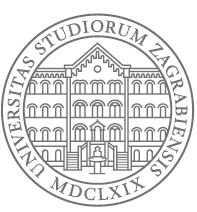| Sažetak | HEP je planirao izgradnju protočne hidroelektrane instalirane snage oko 68,50 MW. Za izgradnju HE Ombla bilo bi potrebno podići podzemnu branu na izvoru podzemne rijeke Omble. Područje zahvata Vilina špilja – Ombla ima najveću bioraznolikost špiljske faune u Hrvatskoj, s visokim udjelom endemske faune. Što se tiče faune šišmiša dosad je zabilježeno 7 vrsta, a to su (poredano abecednim redom – lat.) Miniopterus schreibersii, Myotis blythii, Myotis emarginatus, Rhinolophus blasii, Rhinolophus euryale, Rhinolophus ferrumequinum i Rhinolophus hipposideros. Sve navedene vrste pripadaju dodacima II i IV direktive o staništima, a neke vrste su ugrožene i na nacionalnoj i na globalnoj razini. Vodeći se provedenim studijama dolazi se do zaključka da postoje veliki rizici prilikom izgradnje HE Ombla, te prilikom njenog daljnjeg rada te u kriznim situacijama. Populacija šišmiša mogla bi se ugroziti uznemiravanjem, neplaniranim potapanjem, mijenjanjem mikroklimatskih uvjeta te na kraju gubitkom staništa. Potencijalna izgradnja HE Ombla sobom bi vukla trajne i nepovratne posljedice na ekološku mrežu i NATURU 2000. U tom smislu, prema postavkama Europske smjernice o staništima i Zakona o zaštiti prirode, projekt izgradnje HE Ombla bi morao biti od prevladavajućeg javnog interesa, odnosno od takvog značaja da donosi izuzetno velike ekonomske i društvene koristi kako bi ova neizmjerna i trajna šteta na ekološku mrežu bila prihvatljiva, no ni to nije dokazano jer se predviđa proizvodnja samo 1.5% energije. Ministarstvo zaštite okoliša i prirode je 17. srpnja 2015. s pravom je donijelo Rješenje kojim se odbija zahtjev Hrvatske elektroprivrede za glavnu ocjenu prihvatljivosti HE Ombla za ekološku mrežu. |
| Sažetak (engleski) | HEP had planned the construction of a hydroelectric power plant with the strength of approximately 68,50 MW. For the construction of HE Ombla, it would be necessary to build an underground dam on the spring of the subterranean Ombla river. The area of intervention Vilina spilja- Ombla is the area of highest biodiversity of cave fauna in Croatia, with a high percentage of endemic fauna. Regearding the bat fauna, 7 species have been noted so far and they are (in alphabetical order - latin) Miniopterus schreibersii, Myotis blythii, Myotis emarginatus, Rhinolophus blasii, Rhinolophus euryale, Rhinolophus ferrumequinum and Rhinolophus hipposideros. All the aformentioned species belong to additions II and IV of the directive on habitats, with some species being endangered on the national and global levels. Based on previous studies, construction risks of HE Ombla, its further running, and the risk of crisis situations are significant. The bat population could be threatened by various disturbances, such as unplanned sinking, changing of microclimatic conditions, and finally, the loss of their habitat. Consequently, the potential construction of HE Ombla would greatly, permanently and irrecoverably affect the ecological network and NATURA 2000. With that in mind, according to postulates of the European directive on habitats and the Law on nature protection, the project of HE Ombla construction would have to be of prevailing public interest. That is, it would have to bring great economical profit and social benefits. However, these benefits have yet to be been proven as current predictions show the energy production of mere 1.5%. On July 17th, 2015. The Ministry of Environmental and Nature Protection has denied the request of the Croatian national power company "Hrvatska elektroprivreda" for HE Ombla construction, and rightfully so, as the project didn't meet the (minimum) requirements in regards to the law on nature protection. |


